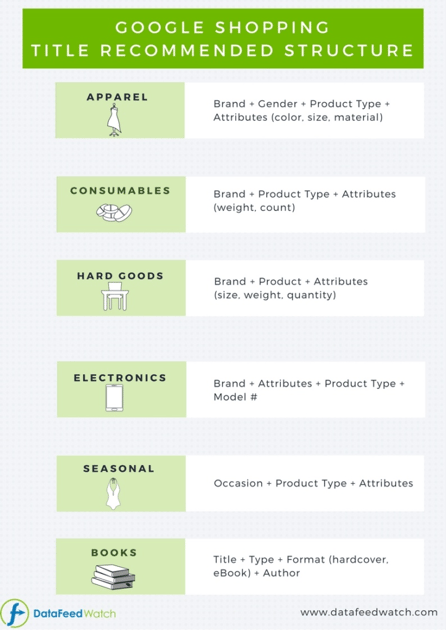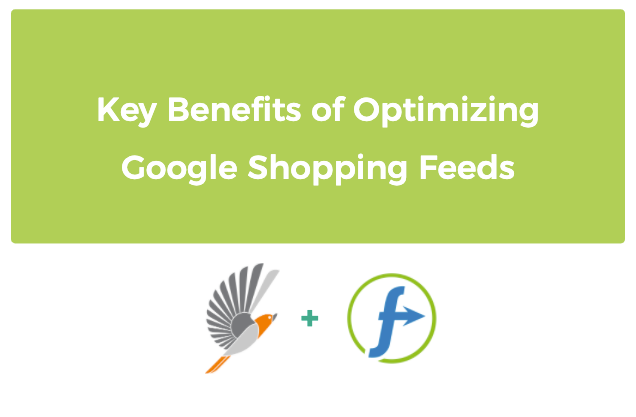This blog post was contributed by our long-time partner DataFeedWatch. They simplify the complexity of feed management for our customers and ensure that the feed quality on Google Shopping Ads and other shopping channels is always high, which significantly supports ad performance.
With Google Shopping Ads taking off globally, it’s a channel that’s hard to ignore. You’ve probably even used it yourself while searching for a product to buy. The most notable difference between Google Shopping Ads and Text Ads is (you might have guessed it) …images! They show prominently at the top of the search page when applicable.
Have you ever wondered what it takes to make it to the prime spots of a search and how to create successful Shopping Ads? It comes down to both optimizing your campaign and the health of your product data feeds. We’ll be focusing on the latter. Data feeds contain all the information about your products. Your feeds will serve as the backbone of your campaigns, supporting the whole process of driving up your sales.
We’ll go over the most important tips for optimizing your feeds, attribute by attribute. We’ll also go through the most significant benefits of fully optimizing your data feeds and making them the best they can be.
The significance of product feeds for Google Shopping Ads
Data feeds are integral to the success of your Shopping Ads. They work as the core to support your ad performance.
Google recently announced they would begin free Shopping Ads product placement listings starting in the US and then opening up in other countries. We’ll see the importance of a solidly built data feed come into play here since the competition will potentially be much higher.
Are you wanting to start your Google Shopping Ads journey but not quite sure where to begin? It can be confusing at first when every channel has different product requirements. Google Shopping Ads has 7 attributes that are required for each and every product listed. They are:
-
-
-
- ID: this is your product’s unique identifier
- Title: the name of your product
- Description: details about your product
- Link: goes to your landing page
- Image Link: URL to the main product image
- Availability: in stock or out of stock
- Price: includes the currency and should be the same as on your landing page
-
-
Often data feeds are created in a spreadsheet format, like Microsoft Excel or Google Sheets. If you create yours here, save it as a tab-delimited (.txt) file. For Google Sheets files you can upload it directly to Merchant Center or download it first and then upload it as a .txt file.

If you’d like to go the XML route (Extensible Markup Language), you can save it with the following filename extensions:
-
-
-
- .gz
- .txt
- .zip
- .bz2
-
-
Tips for Optimization
Let’s get practical and go over some tips you can use to optimize your data feed. Optimizing your feed simply means creating specific rules for your products to make it the best it can be.
Having your ads approved by Google may take some trial and error, but we’re here to help the process go smoothly as possible on the first try. There are three issues you might see in the Merchant Center on the Diagnostics page.
-
-
-
- Errors and disapprovals: A red icon will appear next to these. These require your urgent attention and can be considered critical. Prioritise them and fix them as soon as possible. Typically you’ll have a timeframe provided of when they should be fixed.
- Warnings: A yellow icon will showing where problems are in your feed, can possibly lead to errors

- You might also see simple notifications, these are just suggestions of actions you can take to improve your feed. If you do notice some errors in Google Merchant Center, try to fix them as soon as you can so that your ads can continue to show and perform well.
-
-
Get your feed to shine by using these tricks for the following attributes:
Title: This attribute deserves a lot of your focus because it’s where shoppers get specific details about your product. The most relevant information should appear at the beginning since the whole title may not show. Each vertical (apparel, electronics, books, etc.) has a different recommended attribute order for fully optimized titles. In most cases, it’s a good idea to put the ‘Brand’ first.

Images: Using high-quality images is a good way to earn trust quickly. You’ll also want to make sure you’re following Google’s guidelines, like avoiding watermarks and text, so they get approved. Images are the main difference between Text ads, so this is your chance to catch your shopper’s eye. You can even experiment with using lifestyle images – they might just perform better. 82% of people surveyed said they’d be more willing to click on an ad if the image showed someone actually wearing the product. Only 18% said a plain stock image would be more convincing.
Category: Google will assign categories to your products automatically using their own Taxonomy system. It’s a good idea to still keep an eye on which category is assigned because it affects where your products are shown. You want them to be as accurate as possible, so it might be necessary to overwrite them from time to time. If you need to do so, check out our guide on how to assign Google categories without going crazy.
Product_type: Here is a chance to get even more specific with how your products are categorized. You’re able to add any value you’d like rather than choosing from a pre-made list. A well-chosen product type will help you organize your campaigns into groups and bid effectively.
Gtin: The Global Trade Item Number is a unique identifier made up of 14 digits. While technically no longer required to approve your ads, include it for as many products as you possibly can. Products with valid GTINs will actually perform better than those without because they improve the relevancy of your ads.
Key benefits of optimized feeds for Google Shopping Ads
Increased relevance
Optimising your feed is all about fine-tuning it to work with Google’s Shopping Ads algorithm. When you’re searching for a specific product, how does it know exactly what to show you? Keywords, categories, and product identifiers (like GTINs) are all taken into account when choosing the best match for a searcher’s query. That’s why having a complete and thorough feed is crucial. The more closely the information in your feed lines up, the more likely your products are to be shown.
Chances are when someone is making a very detailed search query they’re close to making a purchase decision. And if they don’t find what they’re looking for, the decision will be “no”. But if you’ve fully optimized your feed down to the very last detail, your product could be the winner.
Better Conversion and ROI
The goal of listing your ads is to make as many conversions (sales) as possible and get the best return on your investment (ROI) as possible. This idea goes hand in hand with increasing your relevance.
First impressions can make or break your sales. With your high-quality images and perfected product title, shoppers will already have a good feel for your product with a quick glance. They’ll also have most of the information they need to know within a few seconds. By the time they click on your ad, you might have already convinced them to make a purchase.
Compelling ads
You’ve been given a set of limitations and the same requirements as all other merchants and advertisers. But how detailed and prepared you are is up to you. It’s possible to have an amazing product, but if your competitors outshine you with their images for example, it will be much more difficult for you to secure the sale.
Google Shopping Ads can be a crowded channel, so how do you stand out and get ahead of your competitors? A beautifully optimized data feed of course! Your ads will be targeted more often since they’ll be more closely matched to the search terms.
Turn searching eyes straight towards your listings with the precision, detail and care you’ve put into optimising your feed.
Advanced campaign optimization strategies unlocked
Take your ads to the next level with this optimising key to success. There are many attributes you can use in your shopping campaigns, and one of them is the Custom Label attribute. You can think of them as a blank canvas and use them to shine light on important information.
Some good examples of these are labeling your best-selling items, creating groups of price margin (high, medium, low) or even seasonal items. Once you have these groups set in place you can diversify your bidding for these groups or even create separate campaigns for them. You’ll also be easier to exclude groups. For example, you might not want to advertise summer gear in winter or products below a certain price point.

Conclusion
Maybe you’ve tried optimizing your feeds in the past but didn’t know how to best set up attributes like the title or description. Whether you’re new to Google Shopping Ads or are familiar with how it works, it’s always a good time to give some care to your data feeds.
With the possibility of Shopping Ads becoming free in the future, even more merchants will turn to this marketplace. Put yourself ahead of the curve by using these tips to create a solid product feed.
If you want to learn more about the topic of feed optimization and other strategies that help you improve your Google Shopping Ads success, you should register for our joint webinar with DataFeedWatch on “The ultimate guide to Google Shopping Ads for Brands and Manufacturers”. Click here for further info.





